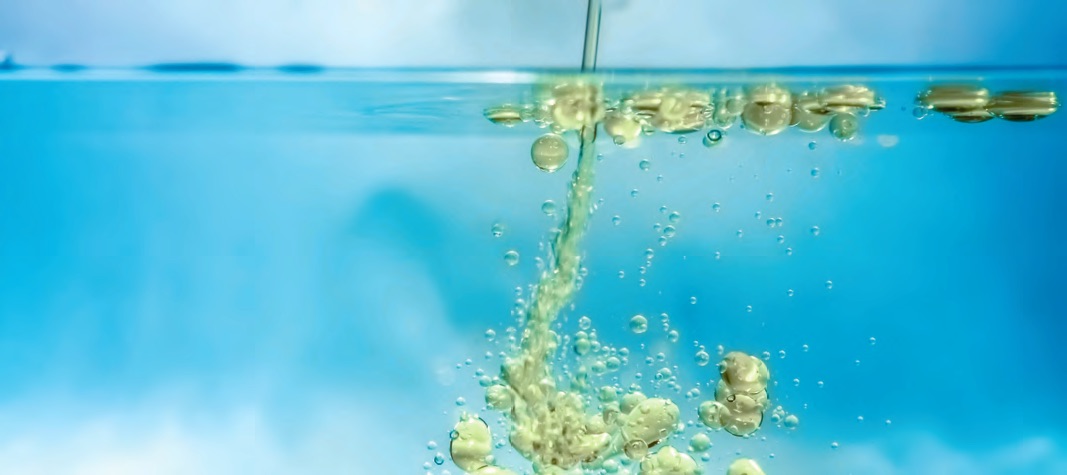Water, water, everywhere
Evan Zabawski | TLT From the Editor January 2021
Oil’s love/hate relationship with water.

“Oil and water don’t mix” is an oft-repeated statement. While it is true, to a point, it implies a far greater incompatibility than the reality. What is uncontested is that putting the two together causes very serious lubrication issues at higher concentrations of water.
The degree to which the statement is true centers on the fact that water molecules are polar, which is what allows other molecules like sugar to dissolve in water, but oil molecules are non-polar. This difference causes oil molecules to be repelled by water molecules and gives rise to the term hydrophobic (water fearing).
Where the statement is slightly misleading is that oils also are hygroscopic, meaning they have a tendency to absorb moisture from the air. Generally, the higher the additive concentration in oil (most additives are polar), the more hygroscopic the lubricant becomes. Depending on the combination of base oil type and additive concentration, a lubricant can develop hundreds, if not thousands, of parts per million of water contamination.
Restated: the individual oil and water molecules will repel each other, but larger groupings are attracted to each other. Confused? This is partially explained by knowing that water can appear in three phases as a contaminant in oil: dissolved, emulsified and free.
Water absorbed from the atmosphere, especially at low concentrations in the lubricant, will be dissolved in the oil. For those thinking that since oil will not dissolve in water, water should not dissolve in oil, just remember the term dissolve means “to cause to disperse or disappear,” and consider that a grain of sugar would dissolve/disperse in a glass of water, but a drop of water will not disperse evenly in a glass of sugar.
When the concentration of dissolved water in a lubricant rises, it will eventually reach a saturation point and separate from the oil. In the form of microdroplets, the water will emulsify with the oil—that is, to form a mixture of two substances that do not combine easily (i.e., “don’t mix”). If the droplets are larger, the water will separate as free water—that is, water that has separated completely and forms its own layer.
The saturation point of any lubricant is dependent on the base oil type, the type and concentration of additives and temperature (heat increases the saturation point). Given all these variables, we can safely state that oil both attracts water (in one phase) yet does not mix with water (in another phase) but omits the third phase. This is where things get a little cloudy—literally.
When the dissolved water content increases toward the saturation point, it will create a haziness to the oil, but once the oil and water emulsify, the mixture will be cloudy—often stated as analogous to a milkshake. This phase of water is neither dissolved, nor free, but rather a type of colloid.
A colloid is a mixture of two or more substances that are not chemically combined but can be separated. Sometimes called a phase separated mixture, the physical description would be microscopically dispersed particles of one substance (either soluble or insoluble) suspended throughout another substance. The most common example would be milk, which is butter-fat
molecules dispersed in water.
Normally, an emulsion is created through mechanical shearing and can be influenced by stabilizing agents known as emulsifiers. One experiment1 tried removing most of the dissolved gas from an oil-water mixture and found that it spontaneously formed a stable cloudy emulsion. This suggests dissolved gases might play a part in the hydrophobic forces normally keeping oil and water separate. Even more interesting was that the mixture did not separate after the gases were returned to the mixture.
So, it is not fair to simply state, “oil and water don’t mix,” as they can certainly combine, even to the point of harmful effect. What is truer is that oil is almost never truly dry, as there is always a certain amount of water present as a contaminant. The question is, in what phase and at what amount?
REFERENCE
1.
Pashley, R.M. (2003), “Effect of degassing on the formation and stability of surfactant-free emulsions and fine teflon dispersions,”
Journal of Physical Chemistry B, 107, pp. 1714-1720. Available
here.
Evan Zabawski, CLS, is the senior technical advisor for TestOil in Calgary, Alberta, Canada. You can reach him at ezabawski@testoil.com.